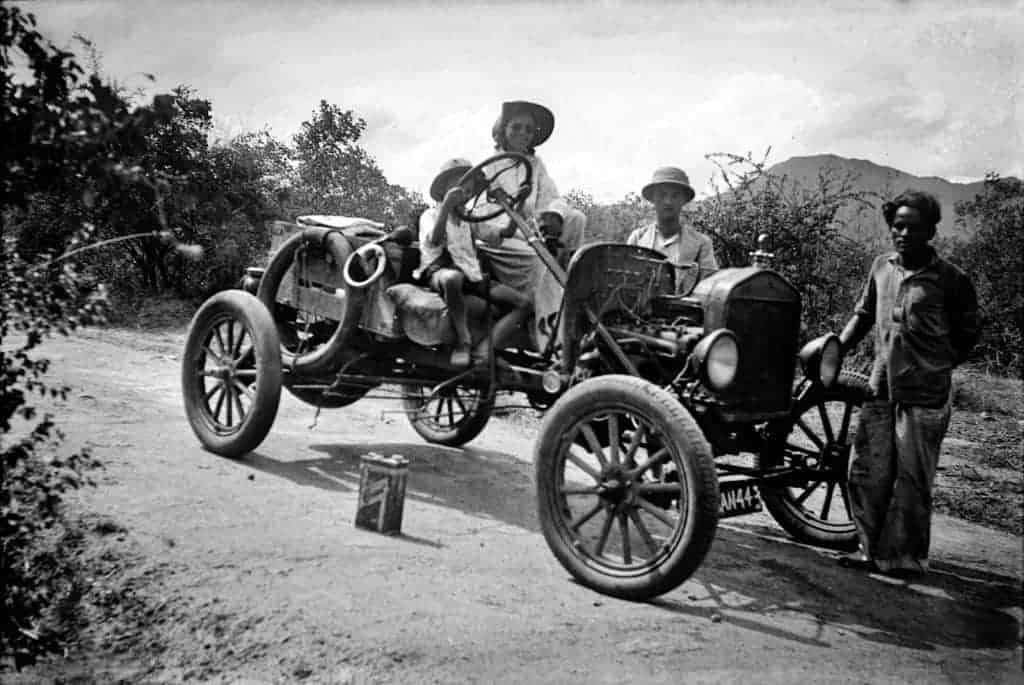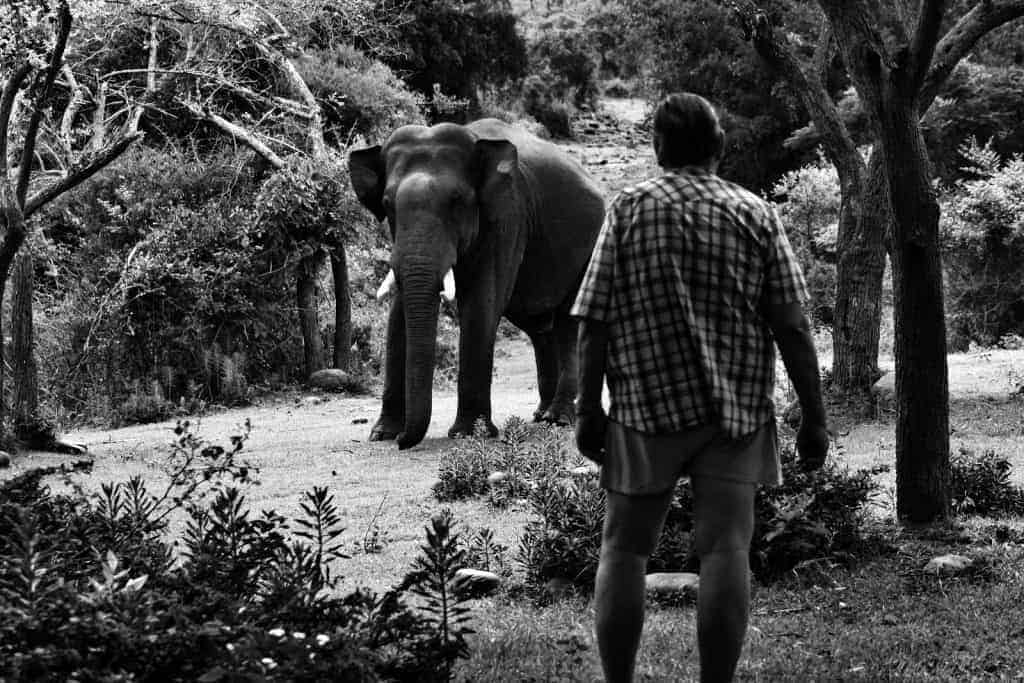What can history teach us? I am often asked this seemingly old yet enduring question, in various ways: Why should we study old buildings? Why worry about people who lived long ago? The oft repeated quote, “Those who do not learn from history are doomed to repeat it” is obviously not a sufficient answer one can offer.
In this article, I draw on Donald Anderson’s biography ‘The Last White Hunter’ by Joshua Mathew to address this question. Donald Anderson (1934 – 2014), belonged to the last of four generations of Scots who made India their home.
I was taken aback when Joshua requested me to review the book as I had no experience of reviewing biographies. However I was glad when I finally got around to reading the book, for it has a lot to offer someone interested in addressing ‘why history matters’.
To start with, the many vignettes on Bengaluru and its environs, including the nearby forest ranges, and their transformation over time are a gold mine for those interested in excavating place history, local histories and geographies, and oral histories. The many incidents of day-to-day living in pre-independence Cantonment offers insights into everyday life in a small city, one which still had a human scale unlike today’s unrecognisable ‘megalopolis’.

Many residents who grew up in the city before the 2000s, before its boundaries were redrawn indiscriminately to swallow neighbouring villages, settlements, farmland, scrub jungle, grasslands and tanks, would likely share Donald’s sense of dislocation, and maybe even alienation.
Similarly, if one could draw a web connecting Donald’s experiences they would criss-cross many domains, cutting across both space and time – clearly bringing up the pathos of his closing remarks in the (auto) biography that he was probably living on borrowed time and should have died much earlier.
The anecdotes are many: the American Army leased his home to make parachutes, he was Stewart Granger’s stunt double for a scene with a tiger shot in the forests of Bandipur, his (former) motorbike was used by Amitabh Bachchan and Dharmendra in the movie Sholay, he had a run in with Veerapan’s gang in the forests, he helped set up the Wildlife Association of South India that was instrumental in saving the Cauvery Mahseer, through his ‘gang of friends and well-wishers’ ABU Angling Company, Sweden (now ABU Garcia) became interested in the Mahseer and created a fishing rod in honour of his friend naming it ‘the Cauvery Panasonic Boom’, and part of his family’s lands were incorporated to form the Bannerghatta National Park.
The book also shines light on lesser known aspects of the city’s past and people, which further evoke a sense of his rich experiences: colonial-period Bangalore was one of the top pugilistic cities of India, home to famous boxers including Gun Boat Jack and the Suares Brothers, whom Don idolised. O C Edwards, the bird photographer, who put the city on the world’s nature photography map, taught him English and Maths. And that Bangalore was the first city in India to receive electricity which, Don recollects, would promptly be turned off every night at 9.
Equally do his family’s footprints trace paths in and around Bangalore, India, and the world: from Cantonment, Whitefield, Koramangala, and Bannerghatta; to Lahore, Ambala, Fathegarh, Calcutta, Madras, and Hyderabad; to Scotland, England, and Egypt. Maybe life in the colonial period was typically like that. I do not know.
But it is worth noting – maybe due to such a peripatetic existence – that his and his family’s circle of friends and acquaintances were remarkably cosmopolitan, unbound by race, religion, caste, language or region. And that could be why Don considered he should have died but instead ‘only grew old’ to see a world becoming more inward-looking.
In his own words, he lived through the transition from ponies to cycles to cars. He grew up in Prospect House, bordering Cubbon Park (now Prestige Obelisk) but the family moved to the ‘grasslands of Koramangala outside the city’ when he was in middle school. After this, he had to walk 12 miles to school every day because he continued to study in Bishop Cottons, which to him was as unremarkable as he and his sister regularly cycling 35 miles to Devarabetta on holidays.
He remembers collecting fish from the tank behind Baldwin Girls’ School which no longer exists (part of it is Divyashree Chambers). He worked in Binny Mills for many years before taking up voluntary retirement to exclusively devote himself to his ‘beloved’ forests ranging from Pondicherry, Mamandur, Pulibonu, Yelagiri, Javalagiri, Hogenikal, Santaveri, Wodappeti, Segur, Ooty, Jalahalli …

It is in these sections of the book when he describes life as a shikari, hunting and shooting game, that his ambivalence of being stands out rather starkly. He neither glorifies nor regrets being a shikari, a rather long phase in his life, and as he phrases it, ‘once life as a shikari ended he moved onto other phases’.
And though Don states that he didn’t really concern himself much with uncomfortable questions and just lived a ‘largely free life’, it is clear that he did recognise social issues, and they did affect him.
He alludes to the difficult decision of choosing to make Bangalore his home after Independence, how the family was worried when his Dad decided to go for his usual walk on August 15, 1947, as his ‘whiteness’ would make him stand out, and how they were all relieved when he returned home covered in garlands.
He mentions in passing how they had to sneak family members out of Lahore during Partition, and how, after the Wildlife Act was introduced in 1972, ‘shikaris’ like him were no longer looked upon favourably. Although in the heydays of shikhar, his skills in the forest led to fame but not fortune.
As he insightfully comments, the change for him, after the Wildlife Act, was not so much loss of freedom to hunt but loss of freedom to move around his forests, a loss shared by many indigenous forest-dwelling communities today.
He also mentions how these forests once held large herds of bison that were no longer to be seen during his old age, how there were ‘almost no jackals around Ramanagaram’, and ‘vultures which were plenty are gone’. His father’s comments seem appropriate even today, that though they were losing ‘wild animals’ they were gaining ‘wild tourists’.
This brings me to his father. Much as Kenneth Anderson probably didn’t like being labelled ‘Jim Corbett of the South’, I presume Donald Anderson would have disliked being known only as Kenneth Anderson’s son. Such a label takes away much of what life seems to have meant to him – freedom to be his own person, including the freedom to make his own mistakes. And as he admits, he made many but never regretted them, but rather wrote them down to life’s experiences.
So did he truly live on borrowed time then? History will likely judge, but after reading the book cover-to-cover, I for one disagree.
The book: ‘The Last White Hunter: Reminiscences of a Colonial Shikari’ by Donald Anderson with Joshua Mathew, 2018, Indus Source Books: Mumbai
Know more about Don Anderson and Bengaluru on History Matters.
True, the book is a fantastic experience to not to old Bangaloreans. The part of Bangalore that Don describes were hardly known to most of us. Cantonement was the name for those places beyond St.Joseph’s. The book reveals the life style & the food habits too. The toffees, canned food stuff & such were unknown to us. I thoroughly enjoyed ever part of te book, which I am still reading.